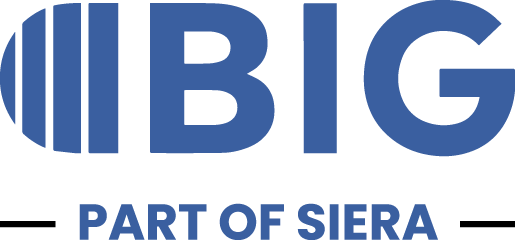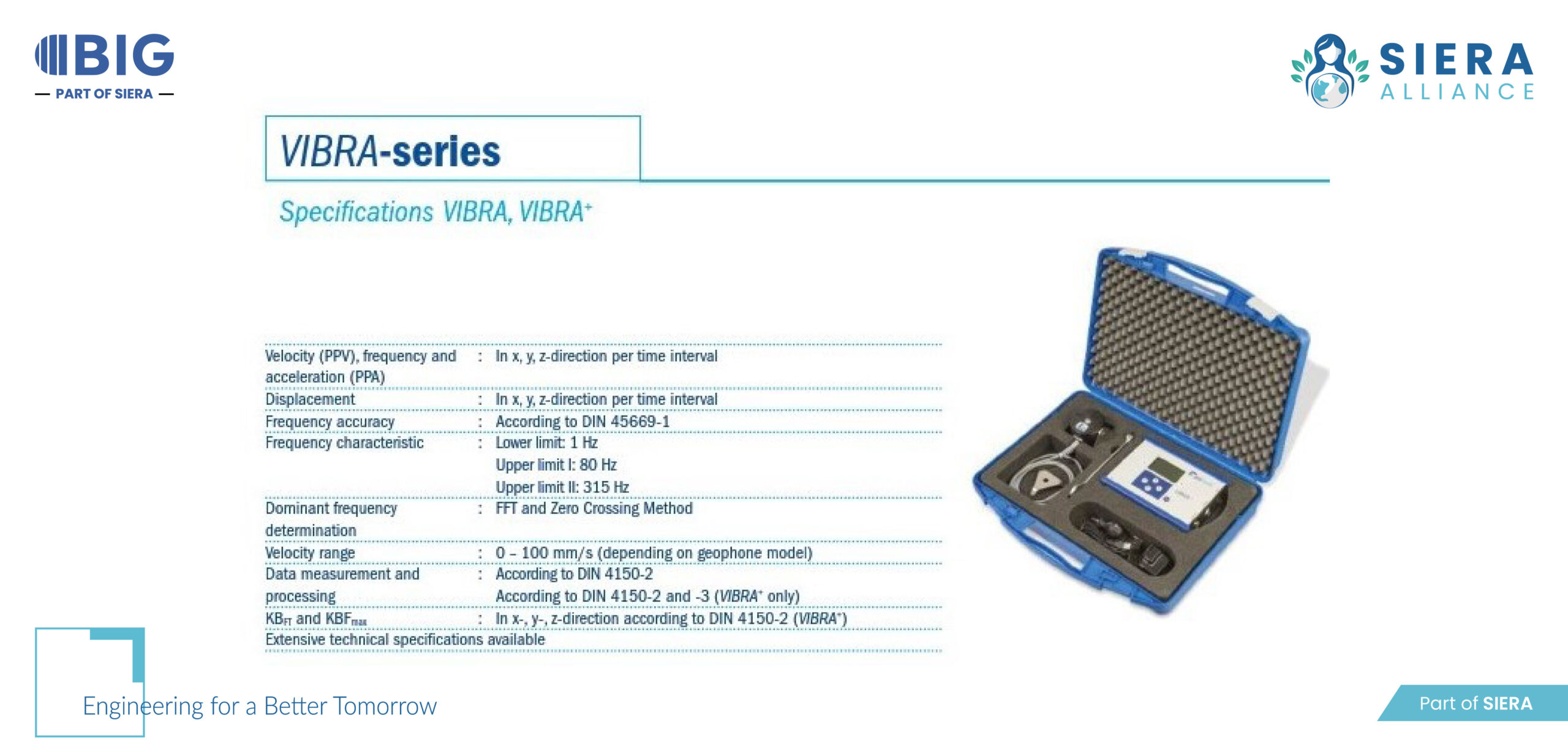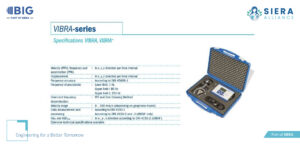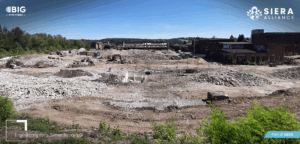Vibrations are almost impossible to avoid during demolition, earthworks, and civil engineering work. Falling or rebounding demolition debris transmits vibrations through the ground to the foundations of neighboring buildings. Dynamic soil compaction work with heavy machinery and vehicles—for example, in the context of deep foundations in less stable soils—also generates movements that can spread as mechanical vibrations in the subsoil. Translated with DeepL.com (free version)
Such vibrations are not merely technical side effects. Depending on their strength, frequency, and source, they can have both annoying and damaging effects. People and animals in buildings, the statics of structures, the building ground itself, and sensitive technical equipment are all affected. For builders, residents, and engineering teams, this raises the crucial question: How can these vibrations be objectively measured, evaluated, and controlled?
Prof. Burmeier Ingenieurgesellschaft mbH – a parrt of SIERA Alliance, based in Hanover (BIG Hanover) – carries out vibration measurements to answer precisely these questions. The aim is to identify risks at an early stage, prevent damage, and ensure construction projects are carried out with the utmost precision.
Standard-compliant assessment according to DIN specifications
Two key standards apply in Germany for the assessment of vibration effects:
- DIN 45669-2 – Measurement of vibration emissions (Part 2: Measurement methods) and
- DIN 4150-3 – Vibrations in building construction (Part 3: Effects on structures).
They define binding rules for how vibrations are to be recorded, evaluated, and documented. Two measurement parameters are central to this:
- Vibration speed [mm/s] – it describes the maximum speed of the oscillation,
- Vibration frequency [Hz] – it indicates how often the oscillation repeats per second.
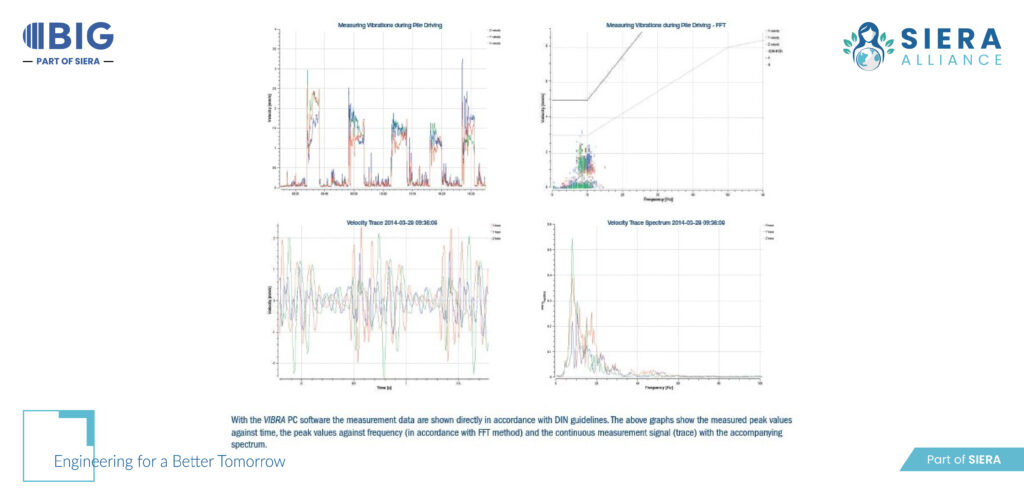
The DIN 4150-3 contains tabular reference values for different building categories and components—from the foundation area to the top floor. This allows an objective determination of whether a vibration is permissible or potentially damaging.
In practice, vibrations are measured during construction and the data is continuously recorded. After analysis in connection with the construction process—for example, taking into account the construction log—a detailed picture of the actual load is created. In this way, vibration peaks can be classified in terms of time and space.
It is important to note that vibrations are assigned to specific sources on the basis of data analysis. Although anomalies can often be clearly attributed to a specific device or work step, accuracy always depends on the quality of the measurement data and the environmental conditions.
If the measured vibration velocity is below the DIN reference values, the result can serve as evidence—for example, to defend against unjustified damage claims. Conversely, exceeding the limit values allows for early response and adjustment of construction processes before damage occurs.
Measuring principle – precision in three spatial axes
Highly sensitive geophones are used to record vibrations, registering oscillations in the three mutually perpendicular spatial axes (X, Y, and Z). Spirit levels and axis markings ensure precise alignment, while stable mounting feet or wall brackets guarantee a secure fit.
The geophones are connected to a portable data logger that features modern interfaces, memory, and software solutions. Measurement intervals, duration, and limit values are programmed specifically for each project—either continuously or at defined intervals, depending on requirements.
If the vibrations exceed specified limits, the system automatically triggers alarm messages via SMS or email—an established practice in construction site monitoring, even if it is not expressly required by DIN standards. This allows site managers to react immediately, adjust machine parameters, and prevent potential consequential damage.
A proven manufacturer of such systems is the Dutch company Profound, whose VIBRA and VIBRA+ device series stand for precise and reliable measurement results. This combination of robust hardware and intelligent software enables real-time monitoring and complete documentation—an indispensable basis for safe and traceable construction processes.
From measurement to responsibility
Monitoring vibrations is much more than a technical routine. It represents responsibility towards buildings, people, and the environment. Through continuous measurement and careful evaluation, construction projects can be implemented in a resource-efficient, safe, and conflict-free manner.
Vibration measurements help to preserve building fabric, avoid repair and renovation costs, and extend the service life of existing buildings. At the same time, they create transparency and trust between building owners, contractors, and neighbors. Objective data replaces subjective perception and forms the basis for fair, fact-based communication.
Measurement and monitoring methods are also becoming increasingly important in terms of sustainability. By preventing damage, they save materials, energy, and emissions. They thus support the goal of responsible and sustainable construction—in line with climate protection targets and resource efficiency.
Prof. Burmeier Ingenieurgesellschaft mbH – a part of SIERA Alliance – has many years of experience and in-depth knowledge in the application of the relevant standards. From the planning phase to construction supervision and final preservation of evidence, the team provides its clients with competent and reliable support throughout all project phases.
The focus is on one goal: Creating measurable safety – for buildings, people, and the environment.
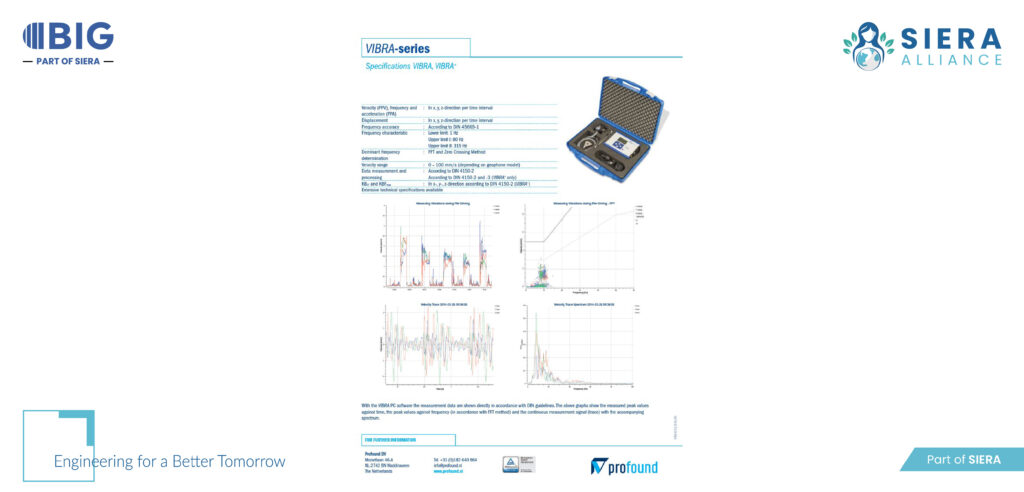
Contact – Precision builds trust
Building means responsibility. Trust our expertise when it comes to safety, verification, and sustainable quality.
Would you like to safeguard your construction project with precise vibration measurements or carry out a procedure to preserve evidence?
Get in touch with us—the team at BIG Hannover will be happy to advise you individually on standard-compliant measurement methods, documentation, and technical solutions.
📧 info@burmeier-ingenieure.de
🌐 www.burmeier-ingenieure.de
Engineering for a Better Tomorrow.
